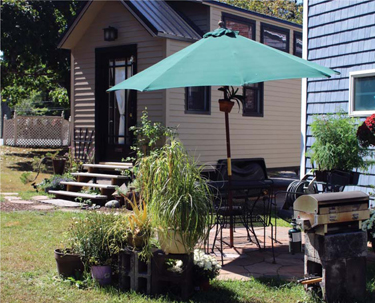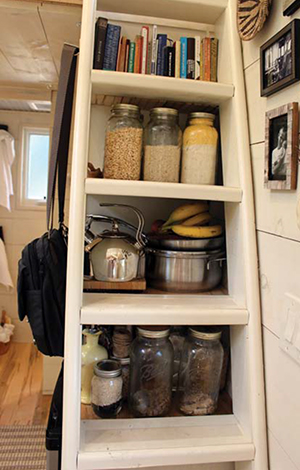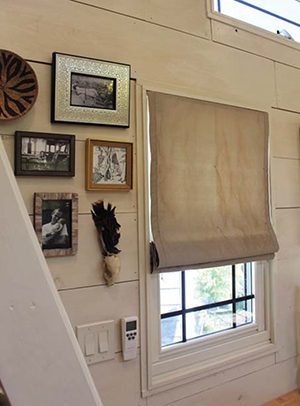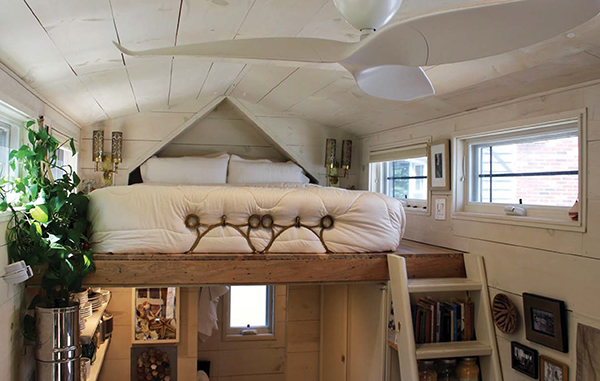

THE HALL FAMILY HAD BEEN THINKING OF BUYING THE BOSTON-AREA TOWNHOUSE THEY WERE RENTING, but the real-estate prices were sky-high. They knew of tiny houses and loved the idea of living small with just the things they needed, so they sold their stuff, settled on a design, and dove right into the building process.

Photographs by A. Hall
They didn’t have much building experience, but with a lot of research and the help of friends, they were able to build the house in six months. It was important to them that they built the house as a family, with their teenage son taking part in the build. The Internet made it easy to find solutions to problems as they arose. “There were very few things we couldn’t look up,” they said.

Photographs by A. Hall


Photograph by A. Hall

Photographs by A. Hall
The Hall family wanted their house to be as sustainable and nontoxic as possible. They used as many reclaimed, handmade, unprocessed, and locally sourced materials as they could. “The whole point of the tiny house was to align our political and social beliefs with how we were actually living,” they said. Their front door is a reclaimed 100-year-old Mission-style door, which took a lot of time and money to restore—but it’s made of solid wood, and there’s no off-gassing. Other things were free; the drawer pulls in their kitchen came from a collection of beach rocks.


Photographs by A. Hall
The family spent hundreds of hours digging through salvage yards to find diamonds in the rough. They found three handmade brass hinges with acorn details for $40, a fraction of the cost to buy them new. But they were grimy and covered in paint, and it took weeks to clean them. The stained-glass window in the bathroom door was another salvage yard find. It was in great shape, but it was stuck in a moldy wooden frame. Getting the frame off the window without breaking the glass was a challenge!


Photographs by A. Hall
For the Halls, putting in the work to get the best-quality materials was worth it, but sometimes it was difficult to find items that they needed. At one point, they bought a porch light from Home Depot because they couldn’t find a light they liked at an affordable price. Then they found one that was even better on Craigslist, snatched it up, and quickly returned the original light to the store. They also found a brass bar stool footrest in a salvage bin and dug through every hardware barrel in the store until they found three more. The footrests now hold the bed in place in the loft.

The Halls were deliberate in their approach to getting rid of their excess clutter. They picked their favorite books to keep and digitized many of the rest before donating them. All of their photos, movies, and music are now stored on two hard drives. They hosted “Craigslist days” where they invited people to come through their house and buy the things they wanted. Each member of the family got a memory box, and whatever mementos they wanted to keep had to fit in their box. Everything else was donated or given away. They advise that you take a lot of time—six months to a year—to get rid of your unneeded things. “The experience of evaluating every single object in your life really forces you to deal with what’s actually important in your life.”
After months of hard work the house was done, and as they moved into the home the family agreed that if anyone was unhappy with living in the tiny house, they would find a different place to live and the house could be a vacation home. The house was an experiment for the family, but they were excited to live in it together. A year later everyone has loved living in the home the entire family built.

Photographs by A. Hall